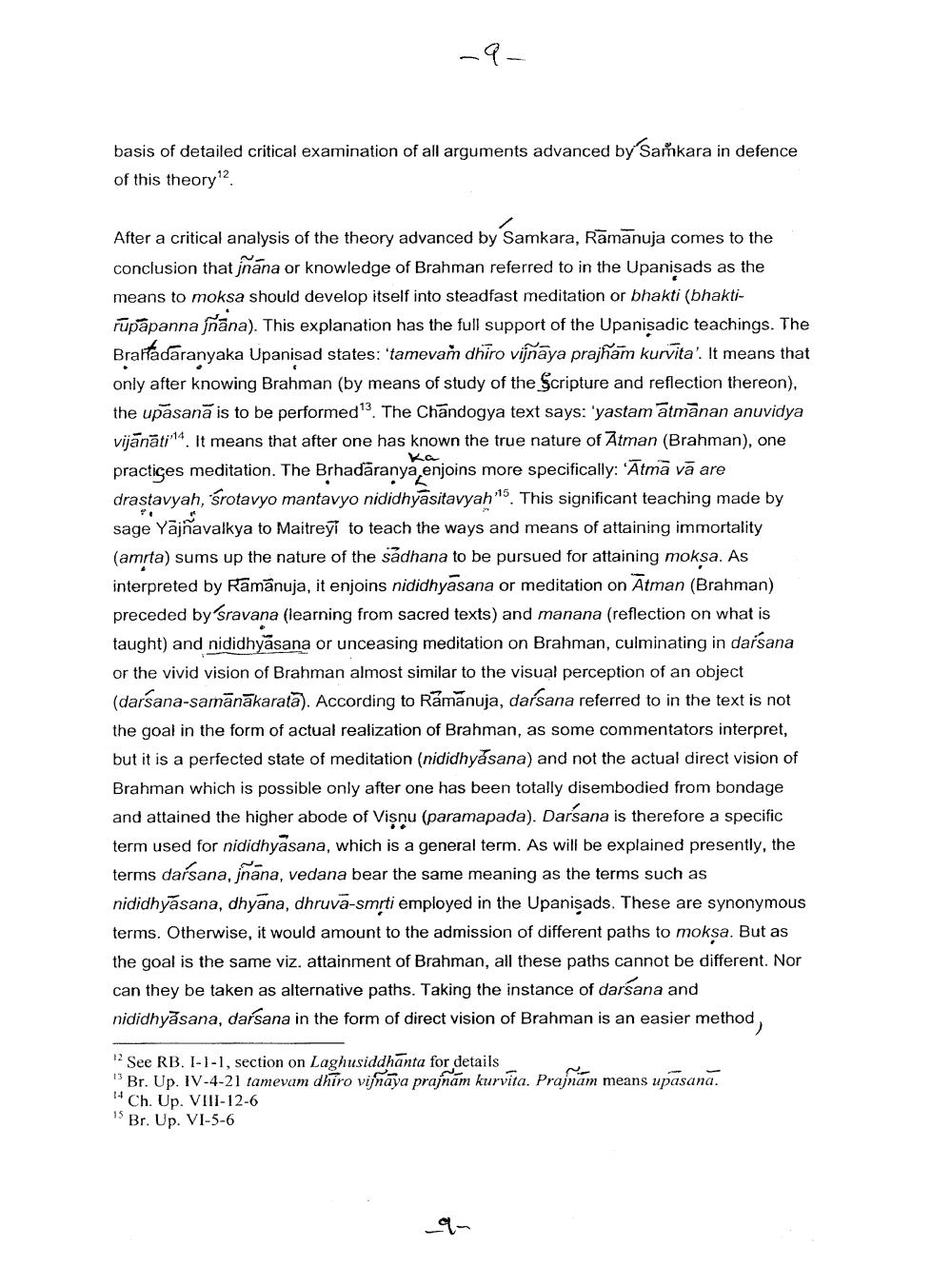Book Title: Synthesis of Yoga in Vaisnavism of Ramanuja Author(s): Publisher: View full book textPage 9
________________ basis of detailed critical examination of all arguments advanced by Saskara in defence of this theory? After a critical analysis of the theory advanced by Samkara, Ramanuja comes to the conclusion that jnana or knowledge of Brahman referred to in the Upanisads as the means to moksa should develop itself into steadfast meditation or bhakti (bhaktirupapanna jnana). This explanation has the full support of the Upanisadic teachings. The Brartadaranyaka Upanisad states: 'tamevan dhiro vijnaya prajnam kurvita'. It means that only after knowing Brahman (by means of study of the Scripture and reflection thereon), the upasana is to be performed 13. The Chandogya text says: 'yastam atmanan anuvidya vijanati 14. It means that after one has known the true nature of Atman (Brahman), one practices meditation. The Brhadaranya, enjoins more specifically: "Atma va are drastavyah, srotavyo mantavyo nididhyasitavyah"5. This significant teaching made by sage Yajnavalkya to Maitreyi to teach the ways and means of attaining immortality (amrta) sums up the nature of the sadhana to be pursued for attaining moksa. As interpreted by Ramanuja, it enjoins nididhyasana or meditation on Atman (Brahman) preceded by Sravana (learning from sacred texts) and manana (reflection on what is taught) and nididhyasana or unceasing meditation on Brahman, culminating in darsana or the vivid vision of Brahman almost similar to the visual perception of an object (darsana-samanakarata). According to Ramanuja, darsana referred to in the text is not the goal in the form of actual realization of Brahman, as some commentators interpret, but it is a perfected state of meditation (nididhyasana) and not the actual direct vision of Brahman which is possible only after one has been totally disembodied from bondage and attained the higher abode of Visnu (paramapada). Darsana is therefore a specific term used for nididhyasana, which is a general term. As will be explained presently, the terms darsana, jnana, vedana bear the same meaning as the terms such as nididhyasana, dhyana, dhruva-smrti employed in the Upanisads. These are synonymous terms. Otherwise, it would amount to the admission of different paths to moksa. But as the goal is the same viz. attainment of Brahman, all these paths cannot be different. Nor can they be taken as alternative paths. Taking the instance of darsana and nididhyasana, darsana in the form of direct vision of Brahman is an easier method, 12 See RB. I-1-1, section on Laghusiddhanta for details 13 Br. Up. IV-4-21 tamevam dhiro vijnaya prajnam kurvita. Prajnam means upasana. 14 Ch. Up. VIII-12-6 15 Br. Up. VI-5-6Page Navigation
1 ... 7 8 9 10 11 12 13 14 15 16 17 18 19 20 21 22 23
